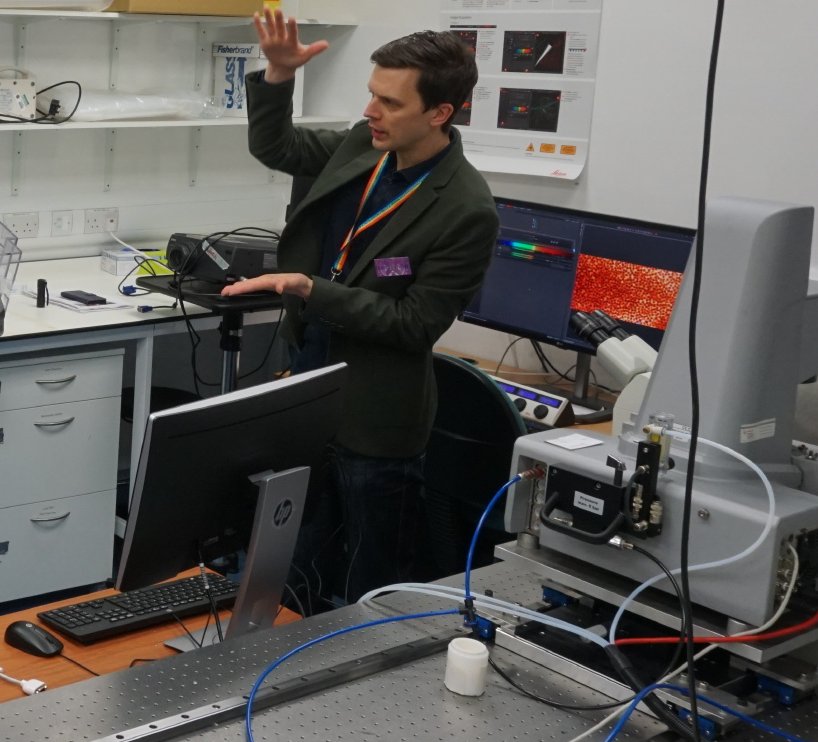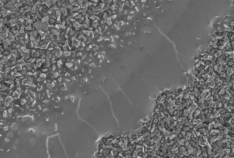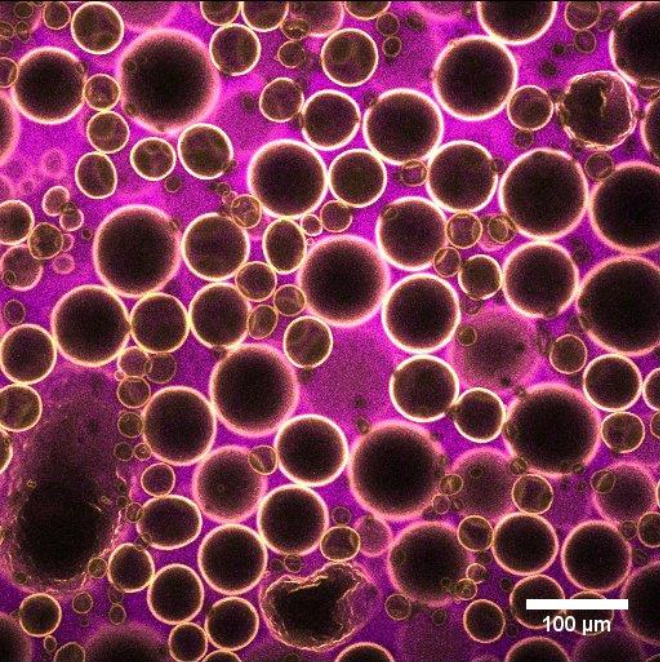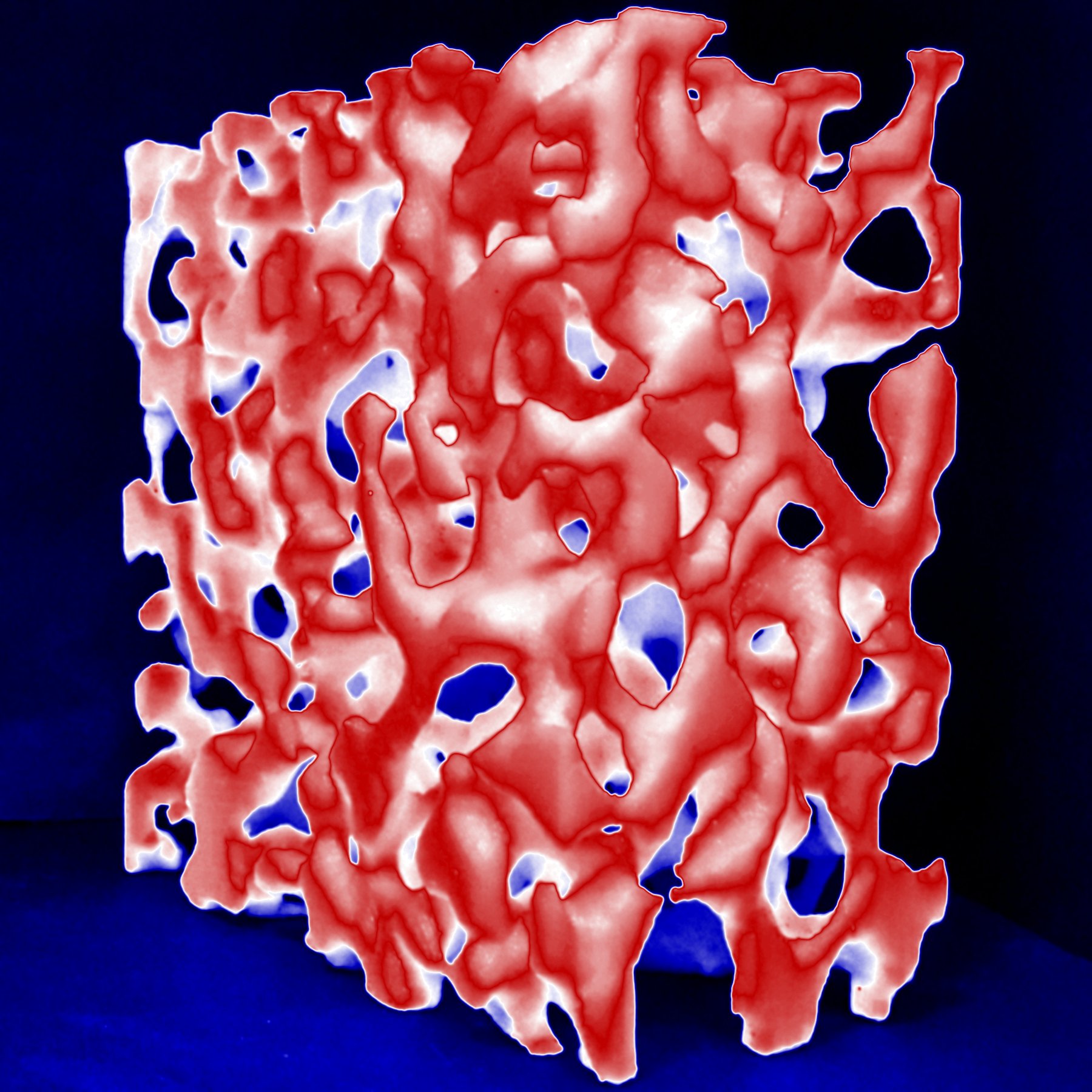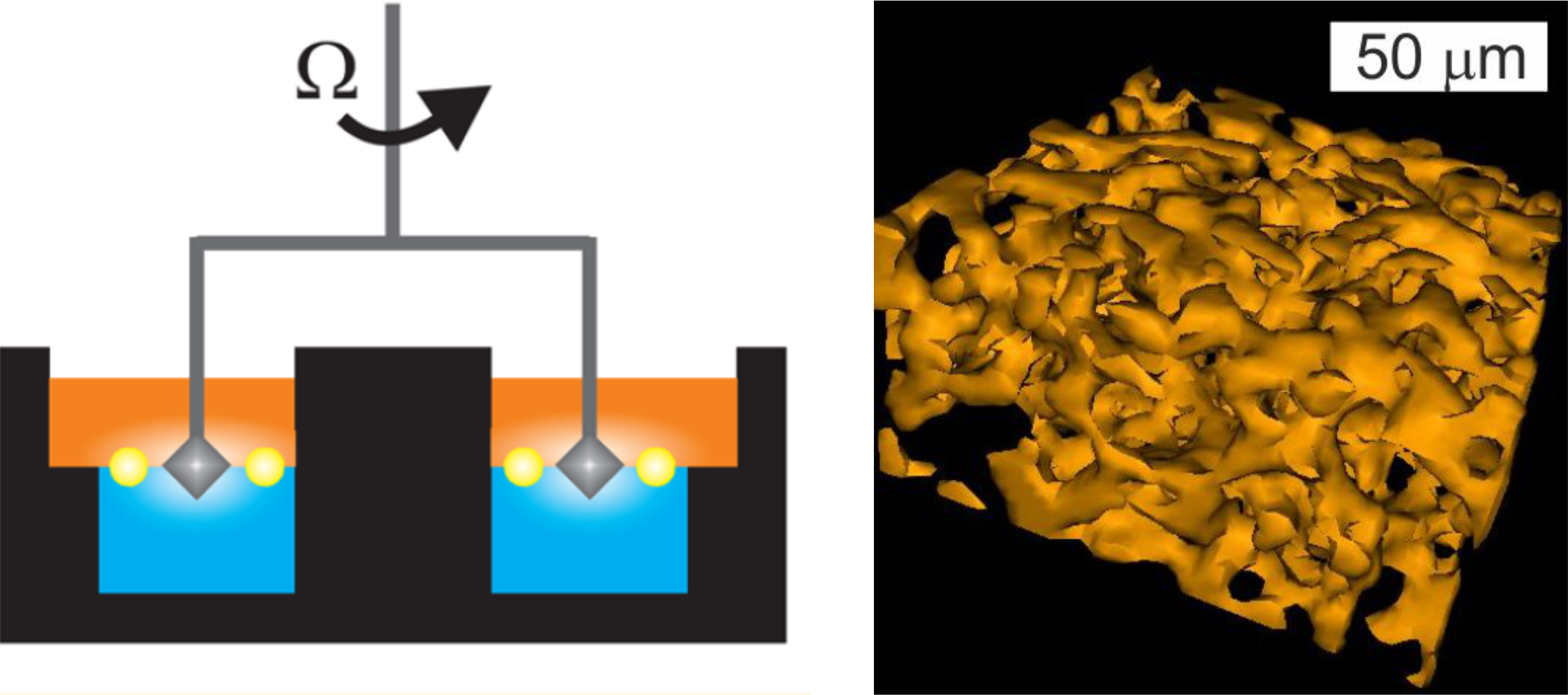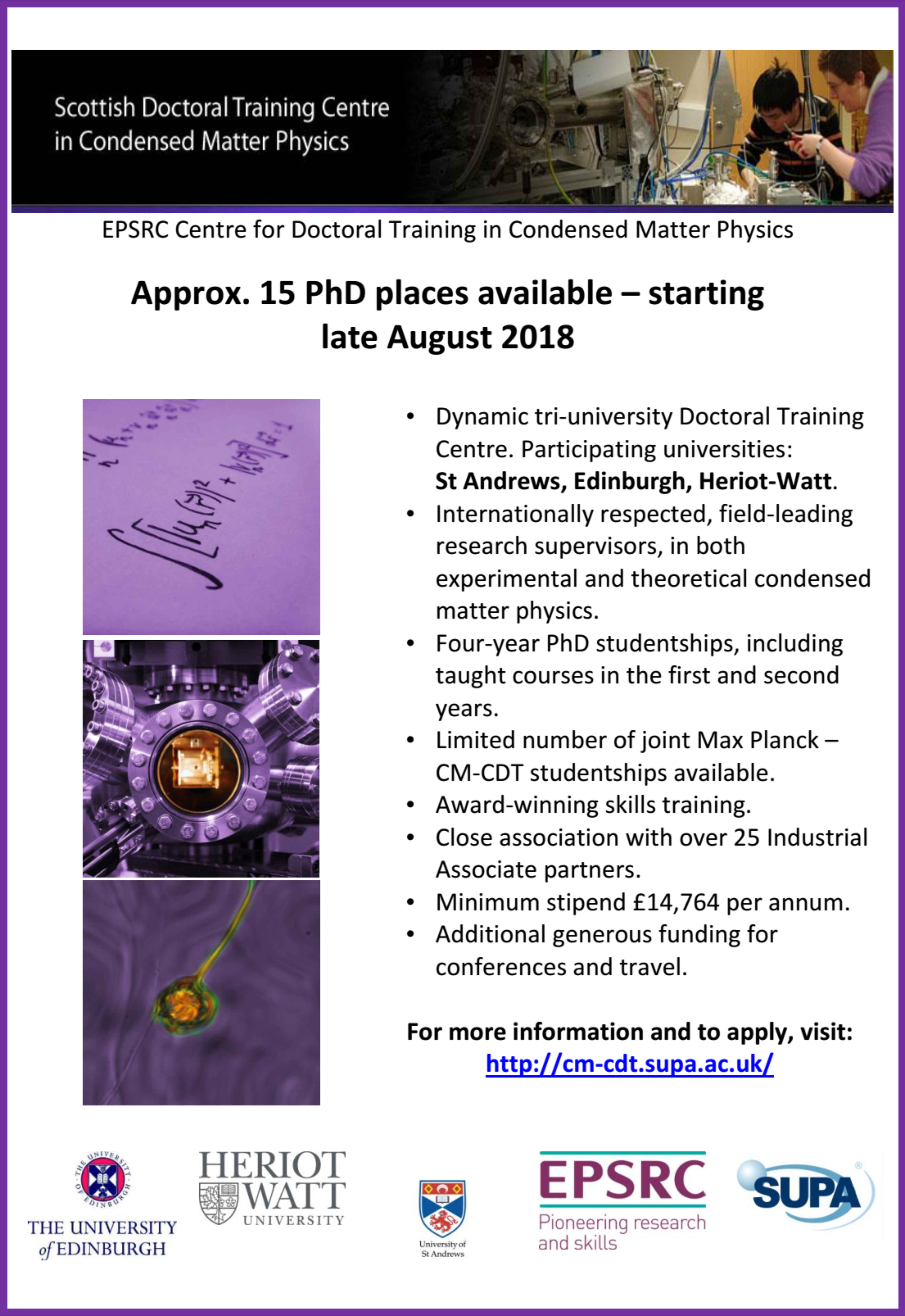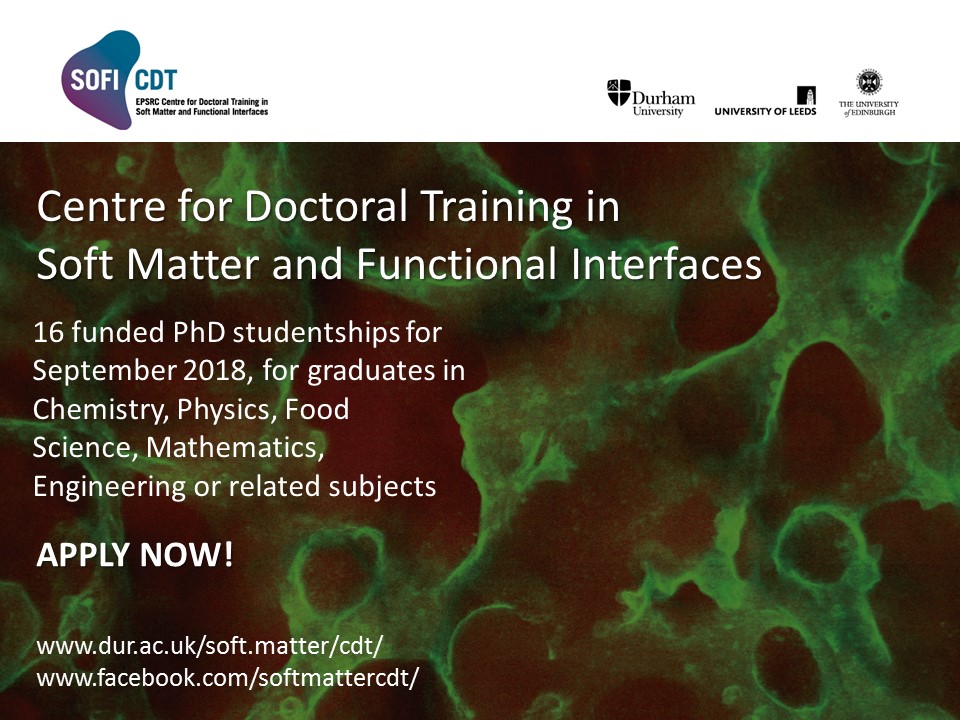Wednesday 16 January 2019: #thisissoftmatter series on Twitter

Initially running alongside the Soft Condensed Matter Physics course that he teaches, Job has started a series of tweets with images of soft materials encountered in everyday life: #thisissoftmatter. This is one of the initial images posted on Twitter for this series, but the image on the home page will be updated regularly in line with the latest tweet!
Saturday 29 September 2018: SMPM took part in Doors Open Day 2018!
Job and Katy took part in a very successful Doors Open Day in the James Clerk Maxwell Building at King's Buildings at The University of Edinburgh on Saturday 29 September 2018. Job guided visitors through the rheo-imaging lab while explaining the physics of cornstarch suspensions (see photo), while Katy helped visitors explore soft matter through a range of hands-on activites!
A short account of Doors Open Day 2018 can be found on the School's website.
Wednesday 25 July 2018: welcome to SOFI CDT PhD student Carmen Morcillo Perez!
We welcome Carmen Morcillo Perez, who recently joined the group as a SOFI CDT PhD students on the project 'Complex Formulations Drying on Complex Substrates'!
Carmen on the School's people directory and on LinkedIn.
Monday 9 April 2018: Katy awarded best student presentation at Physics in Food manufacturing 2018!
Congratulations to Katy, who has been awarded the prize for the best presentation by a student for her talk on Pickering stabilization of emulsions under freeze-thaw cycles at Physics in Food manufacturing 2018!
IOP Physics in Manufacturing Group newsletter, March 2018, page 8
Wednesday 17 January 2018: paper on 3D bicontinuous hybrid electrolytes for all-solid-state batteries out now!
We have collaborated with Prof. Peter Bruce's group at The University of Oxford on 3D bicontinuous hybrid electrolytes for all-solid-state batteries, including those with a bijel-like structure; the corresponding paper is out now in Energy & Environmental Science.
Wednesday 13 December 2017: topical review on interfacial rheology and (bicontinuous) Pickering emulsions!
Job's topical review with Jan Vermant on interfacial rheology of model particles at liquid interfaces and its role in the formation and stability of (bicontinuous) Pickering emulsions, including bijels, is out now in Journal of Physics:Condensed Matter.
Thursday 9 November 2017: MISE flexible funding call for pump priming and/or enabling projects!
MISE flexible funding call for pump priming and/or enabling projects in Multiscale Tuning of Interfaces and Surfaces for Energy Applications! MISE plan to support up to 6 projects, with a total of £185k available (at 80% FEC). Check the flyer below and contact Job Thijssen if you are interested in a collaborative project.
Thursday 2 November 2017: looking for a PhD studentship in condensed matter in Scotland?
Available: about 15 PhD places at the EPSRC Scottish Doctoral Training Centre in Condensed Matter Physics - starting late August 2018.
Wednesday 18 October 2017: Looking for a PhD studentship in soft matter in Edinburgh, Leeds or Durham?
Available: 16 funded PhD studentships for September 2018 at the EPSRC Centre for Doctoral Training in Soft Matter and Functional Interfaces.
Saturday 23 September 2017: SMPM group at Soft Matter @ Doors Open Day
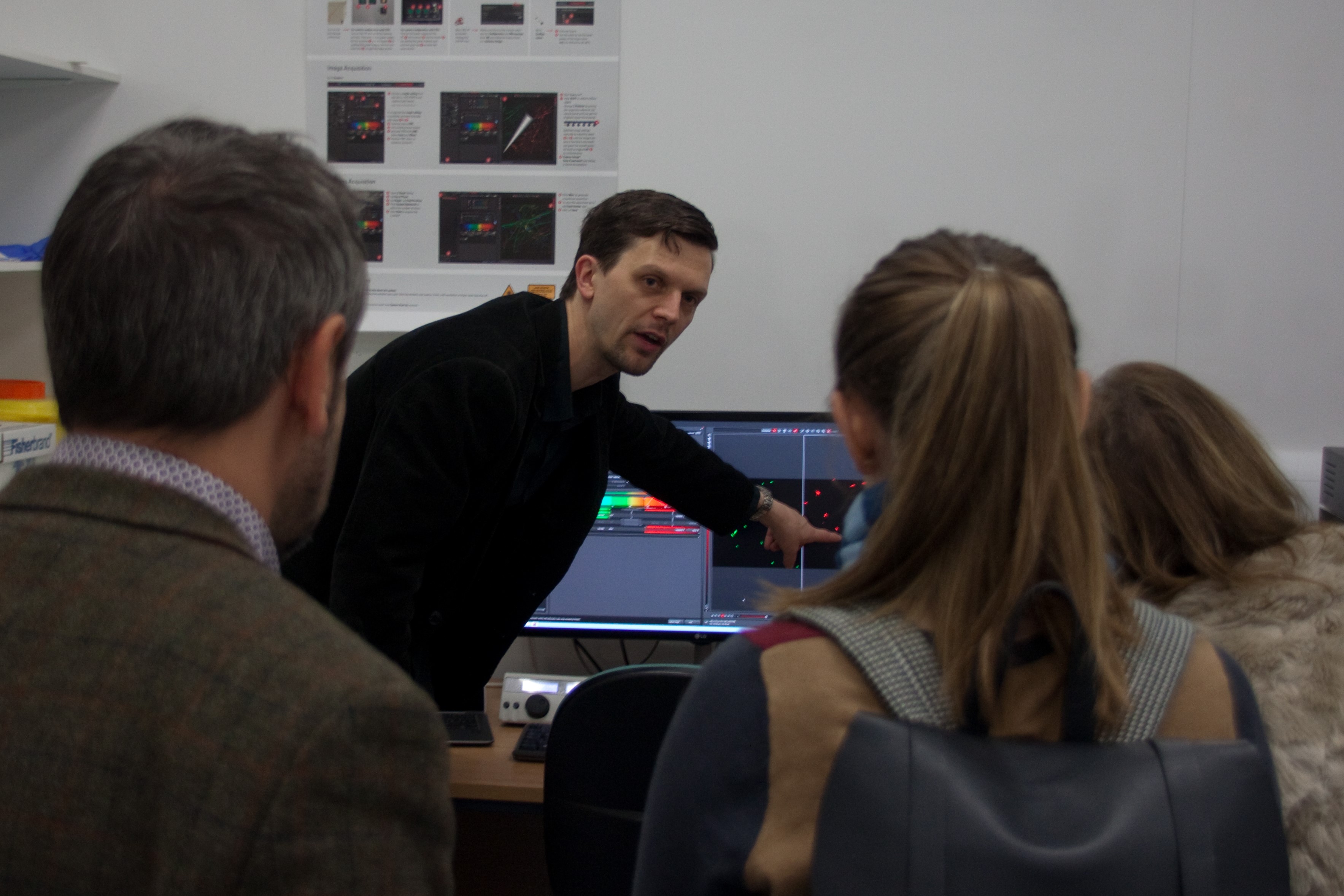
Group members Job and Katy joined numerous volunteers across the Institute for Condensed Matter & Complex Systems at the School of Physics & Astronomy @ Doors Open Day 2017.
For further info, see this news item at the School's website.
Wednesday 19 July 2017: SMPM group at UK Colloids 2017
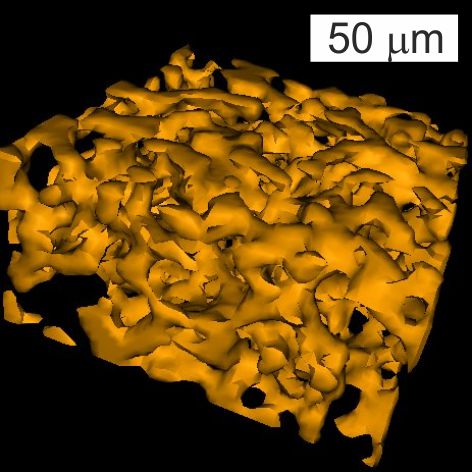
Great to see so many contribution, both talks and posters, by our group members at UK Colloids 2017 in Manchester last week. For those asking about whether we have shown experimentally that bijels are bicontinuous: yes, we have! Click the link below for our open-access paper in Soft Matter in which we "demonstrate that bijels are bicontinuous using an image-analysis technique known as 'region growing'".
Monday 15 May 2017: Job talks about #bijels, #milk and #batteries at Pint of Science #pint17
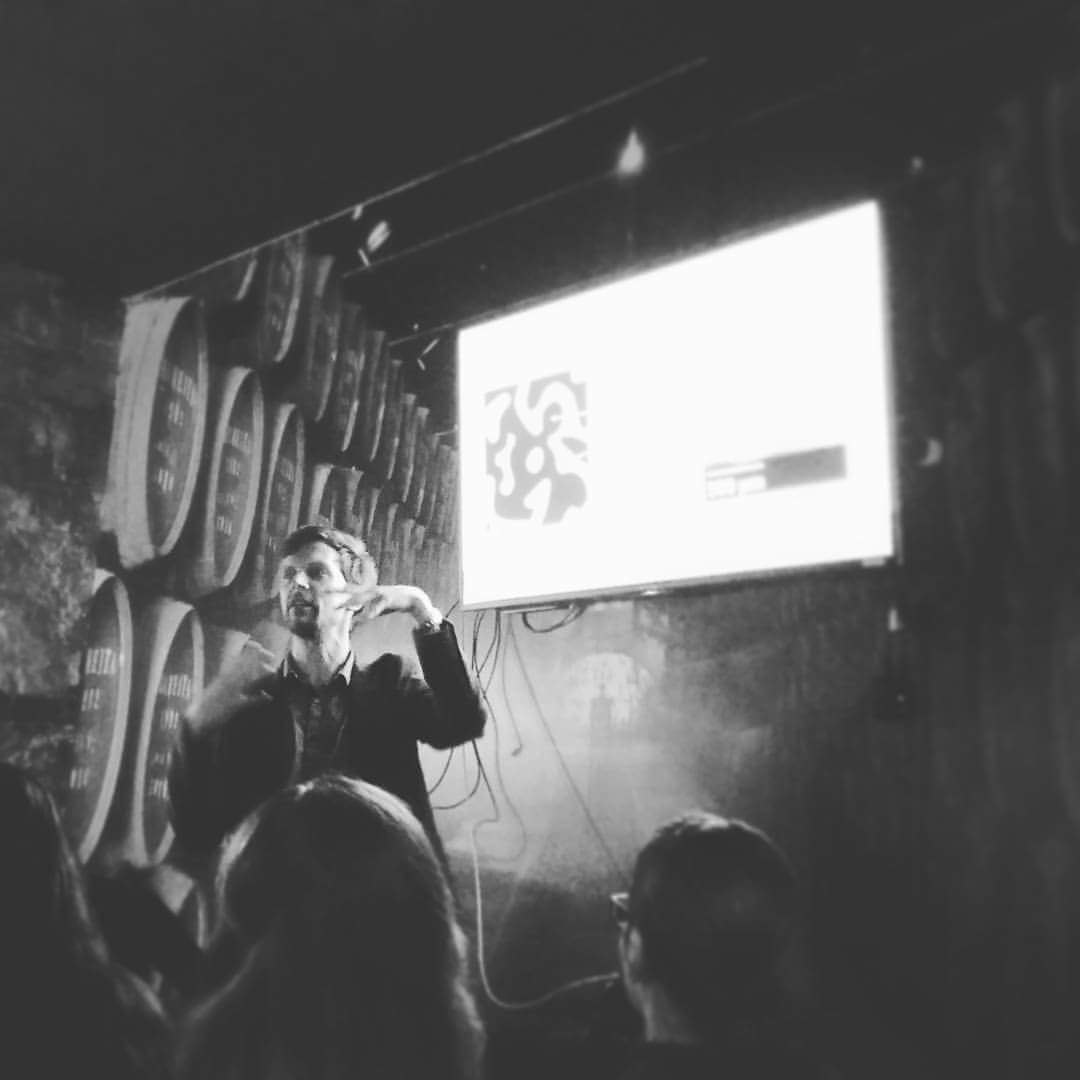
Job talked about "Bijels: from a fascinating lab 'milk' to making better batteries". Great experience of presenting our research to an audience of science enthusiasts, who asked some really good questions afterwards! Thanks to the Edinburgh Pint of Science Stranger Things team for making it all possible!
Wednesday 3 May 2017: our paper on interfacial rheology and Pickering emulsions in Langmuir is out now!
Interfacial Rheology of Sterically Stabilized Colloids at Liquid Interfaces and Its Effect on the Stability of Pickering Emulsions
R. Van Hooghten, V. E. Blair, A. Vananroye, A. B. Schofield, J. Vermant and J. H. J. Thijssen
Langmuir 33, pp 4107-4118 (2017)
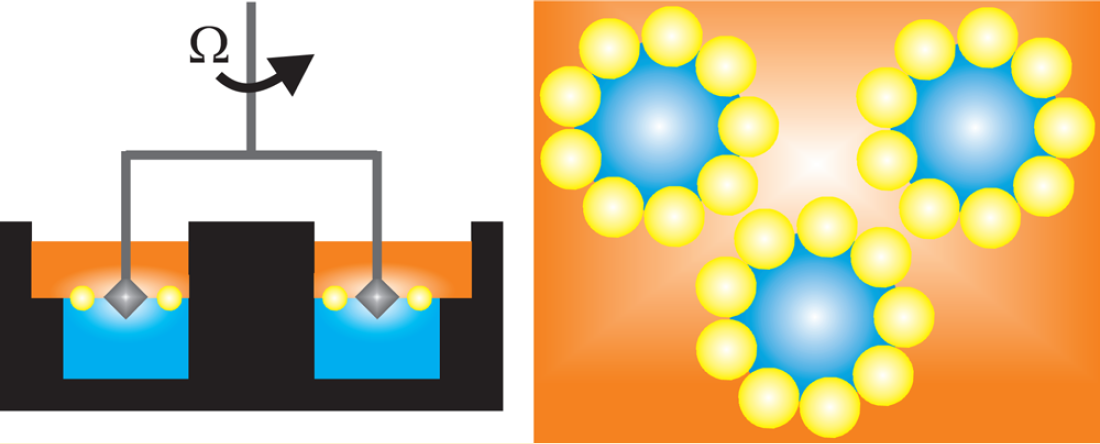
Particle-laden interfaces can be used to stabilize a variety of high-interface systems, from foams over emulsions to polymer blends. The relation between the particle interactions, the structure and rheology of the interface, and the stability of the system remains unclear. In the present work, we experimentally investigate how micron-sized, near-hard-sphere-like particles affect the mechanical properties of liquid interfaces. In particular, by comparing dried and undried samples, we investigate the effect of aggregation state on the properties of the particle-laden liquid interface and its relation to the stability of the corresponding Pickering emulsions. Partially aggregated suspensions give rise to a soft-solid-like response under shear, whereas for stable PMMA particulate layers a liquid-like behavior is observed. For interfacial creep-recovery measurements, we present an empirical method to correct for the combined effect of the subphase drag and the compliance of the double-wall ring geometry, which makes a significant contribution to the apparent elasticity of weak interfaces. We further demonstrate that both undried and dried PMMA particles can stabilize emulsions for months, dispelling the notion that particle aggregation, in bulk or at the interface, is required to create stable Pickering emulsions. Our results indicate that shear rheology is a sensitive probe of colloidal interactions but is not necessarily a predictor of the stability of interfaces, e.g., in quiescent Pickering emulsions, as in the latter the response to dilatational deformations can be of prime importance.
